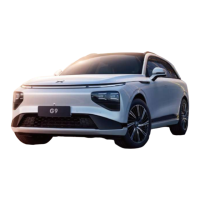covered, disappeared, temporarily adjusted
due to road construction, or change quickly
(for example, lane diverging, crossing, or
merging). Special lane changing occasions
such as lane diverting, diverging, distribution
area, and the lane becomes wide.
• There are words or traffic signs on the
surface of the road, or there are interfering
factors such as dense words, traffic signs,
asphaltic oil, braking marks, tire marks, water
ruts, and others.
• There are large vehicles such as trucks and
buses at the side or ahead.
• Objects or landscape features are casting
strong shadows on the lane.
• There are words or traffic signs on the
surface of the road.
• The radar is restricted.
• The camera is subject to the limit.
• The radar or camera is blocked (dust and
cover, etc.) or bad weather conditions (for
example, heavy rain, heavy snow, and heavy
fog).
• Road edges made from traffic cones, water-
filled barriers, and cement piers.
• The LCC performance will be affected when
there is large lateral airflow or strong wind at
one side of the vehicle. LCC is not suitable
to be used under such weather conditions.
The above example, warning, and limit do not
describe all conditions that affect the normal
operation of the LCC.
$XWRPDWLF/DQH&KDQJH$/&
)XQFWLRQ,QWURGXFWLRQ
After lane centering control is activated, ALC can
assist the driver in changing lanes based on the
lane changing directive of the driver.
$VVLVWHG'ULYLQJ
62
3
https://www.automotive-manuals.net

